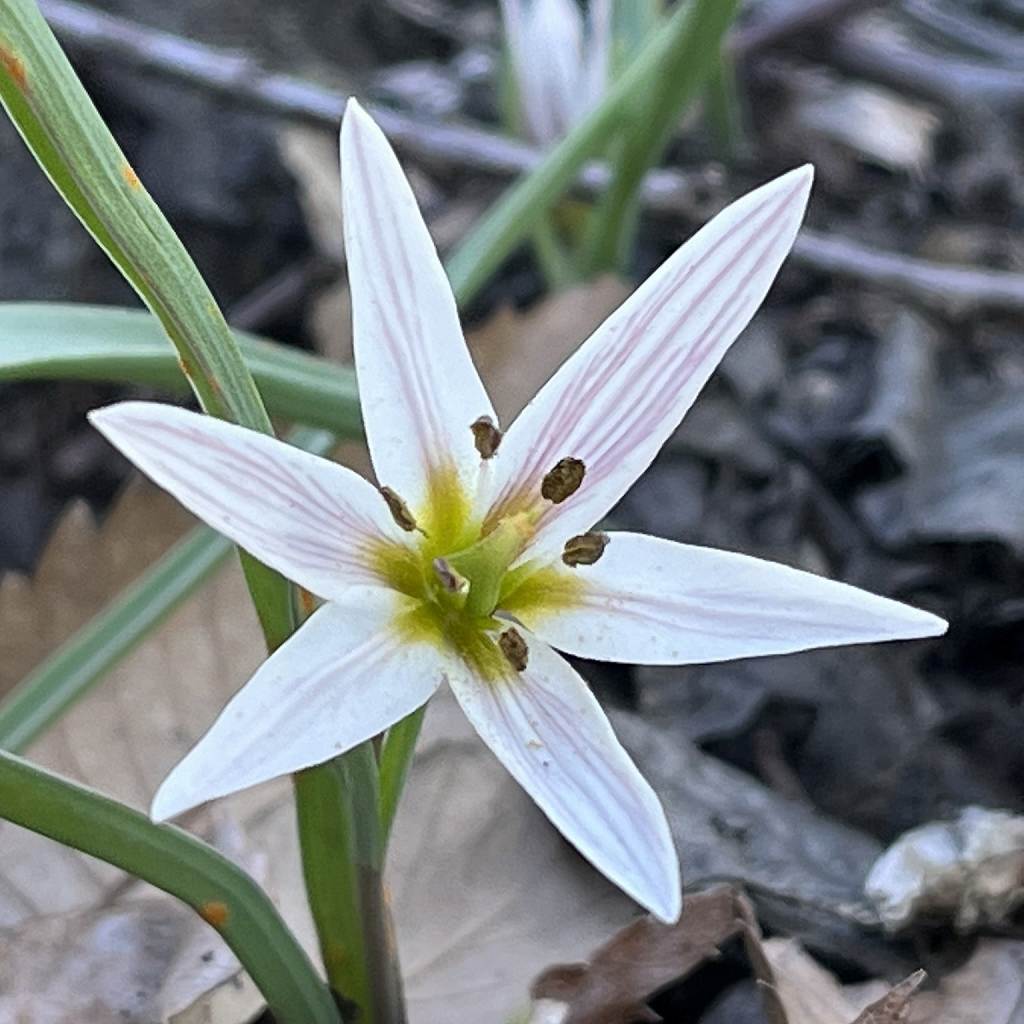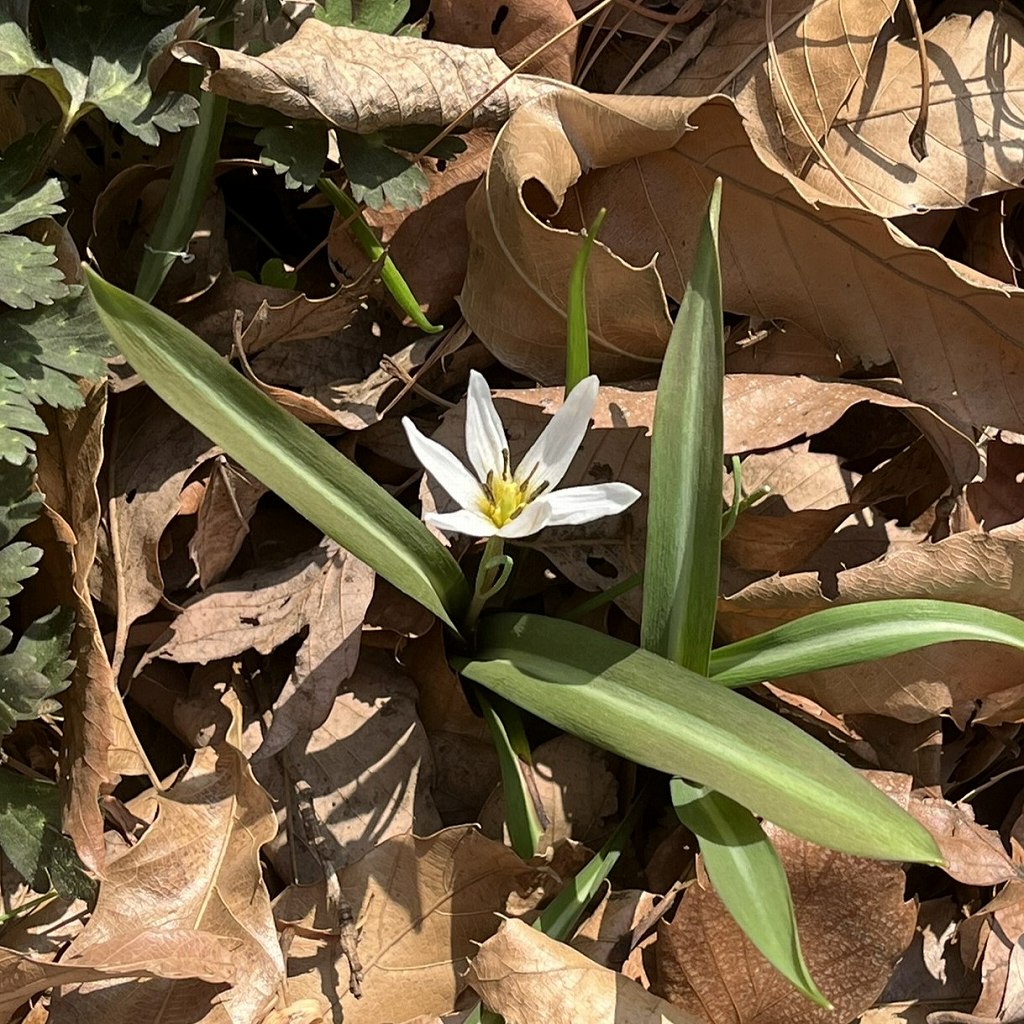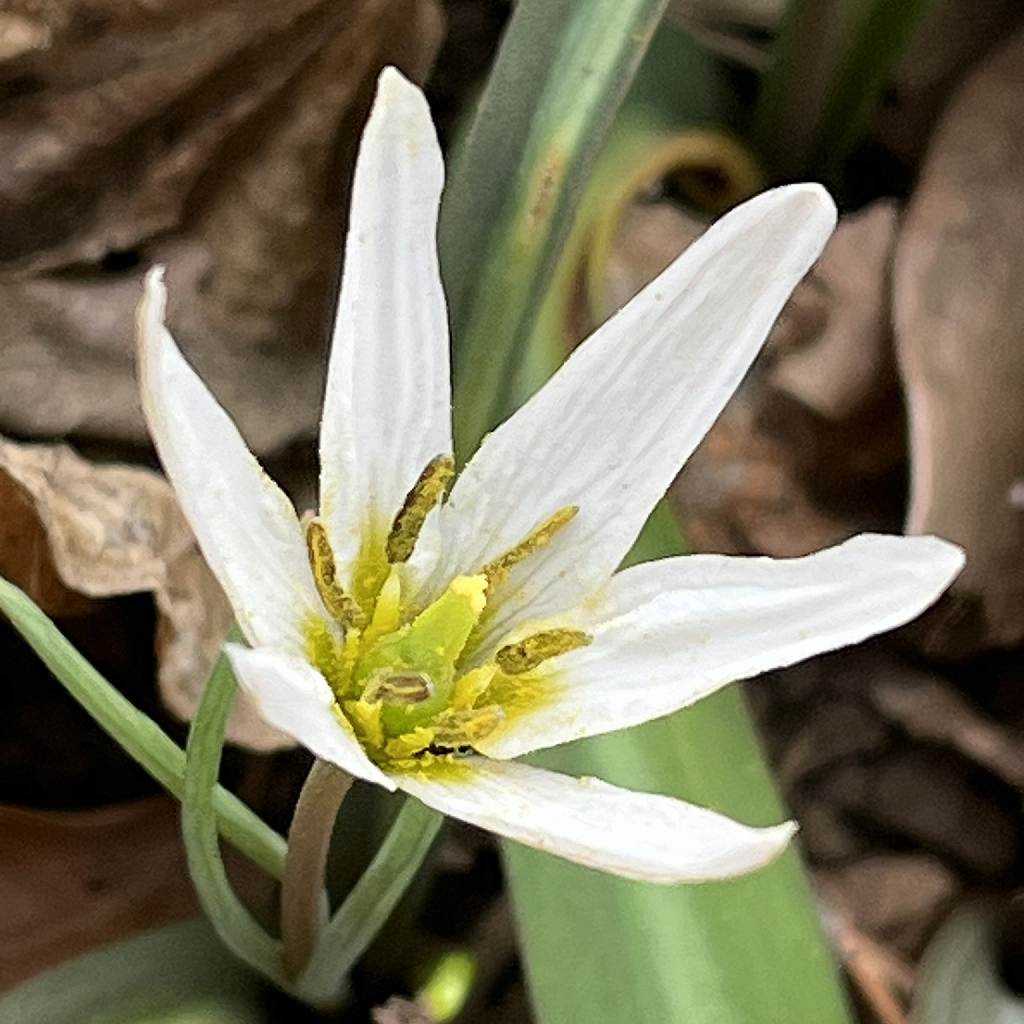アマナの名前の由来は鱗茎が糖質を含み、食べると甘味が感じられるから。葉と葉の間から花茎を1つ伸ばし、釣鐘型の花を1つ咲かせます。
The Japanese name of Amana means “sweet herb”. This is because the bulbs contain a lot of carbohydrates and taste sweet when eaten. One flower stem extends from between the leaves and one bell-shaped flower blooms.
【仮名】アマナ, ヒロハノアマナ
【和名】甘菜, 広葉の甘菜
【英名】Amana
【学名】Amana edulis, Amana erythronioides
【誕生】03/ 31, 05/ 03
【開花】03, 04, 05月
【花色】White
アマナ
アマナの概要

アマナはユリ科アマナ属の多年草。日本では本州の東北地方南部から四国、九州、奄美大島まで、国外では朝鮮半島と中国東北部に分布しています。陽当たりのよい野原の湿ったところで自生。秋に葉を伸ばして冬を越し、春に花が咲いて夏に休眠するスプリング・エフェメラルです。
アマナの名前

アマナの名前の由来は和名の「甘菜」です。これは鱗茎が糖質を多く含み、食べると甘味が感じられるから。同じように塊茎が糖質に富み、食べられる慈姑に因んで「麦慈姑」とも呼ばれます。ラテン語の属名アマナも和名に由来。種小名エデュリスは「食べられる」という意味です。
アマナの姿形

アマナは卵形の鱗茎を作り、地中で細い茎を伸ばします。葉は細長い線形で、真ん中に白色の線が走り、2枚ずつ向かい合って地上に伸びます。葉と葉の間から花茎を1つ伸ばし、釣鐘型の花を1つ咲かせます。花被片が6枚、雄しべが6本、苞葉が2枚。花後は丸い蒴果を結びます。
アマナの近縁

アマナの近縁「広葉の甘菜」は、日本での分布が本州の関東~近畿、四国に限られます。種小名エリスロニオイデスは「カタクリ属に似た」という意味。甘菜よりも葉が短く幅広で、真ん中の白色の線が目立ちます。花の下の苞葉は3枚。各地で絶滅の恐れがあるほど衰退しています。
アマナの利用

アマナは鱗茎が良質の澱粉に富むことから、食用のみならず、生薬「山滋姑」「光滋姑」に用いられました。鱗茎は花後に掘り採って水洗い後、外皮を除いて解し、天日干しに。水から煎じて喉の痛みを和らげたり、ショ糖とともにアルコールに半年くらい漬けて滋養強壮に用います。
Amana

Amana is a perennial plant of the Liliaceae family. In Japan, it is distributed from the southern Tohoku region of Honshu to Shikoku, Kyushu, and Amami Oshima, and overseas in the Korean Peninsula and northeastern China. It grows wild in moist, sunny fields. It is a Spring ephemeral that grows leaves in the fall and survives the winter, blooms in the spring, and goes dormant in the summer.
The Japanese name of Amana means “sweet herb”. This is because the bulbs contain a lot of carbohydrates and taste sweet when eaten. The Latin genus name Amana is derived from the pronunciation of the Japanese name. The species name edulis means “edible”.
Amana produces oval scales and grows thin stems underground. The leaves are long and thin, with a white line running down the middle, and they grow in pairs on the ground, facing each other. One flower stem extends from between the leaves and one bell-shaped flower blooms. There are 6 tepals, 6 stamens, and 2 bracts. After flowering, it produces round capsules.
A related species of Amana, “erythronioides”, is distributed in Japan only in the Kanto to Kinki regions of Honshu and Shikoku. The species name means “similar to Erythronium.” The leaves are shorter and wider than Amana, with a noticeable white line down the middle. There are 3 bracts under the flower. It has declined to the point where it is threatened with extinction in many places.
Amana’s bulbs are rich in high-quality starch, so it was used not only for food but also for herbal medicine. After flowering, the bulbs are dug up, washed with water, the outer skin is removed, unraveled, and dried in the sun. It is decocted from water and taken to relieve a sore throat, or soaked in alcohol with sucrose for about six months and taken as a tonic.


